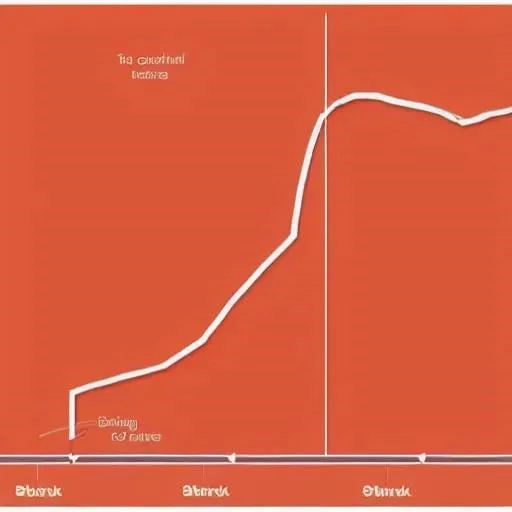For many navigating the complexities of Social Security Disability Insurance (SSDI), the path to financial stability often feels fraught with unspoken rules and lingering uncertainties. A prevalent question echoing through communities, from online forums to family discussions, is whether the pursuit of investment growth, particularly through the stock market, jeopardizes their hard-earned benefits. Today, October 2, 2025, as financial landscapes continually evolve, an optimistic truth emerges, offering a beacon of hope for recipients aiming for greater economic independence.
The conventional wisdom, often born from caution, has unfortunately led many SSDI beneficiaries to believe that any form of asset accumulation or passive income could instantly trigger a loss of vital support. This misconception, while understandable, frequently prevents individuals from exploring avenues that could significantly enhance their long-term financial security. The reality, however, is far more empowering: SSDI, unlike its counterpart Supplemental Security Income (SSI), is fundamentally structured to allow recipients to invest in stocks and other assets without impacting their monthly benefit payments, opening a remarkably crucial pathway to wealth creation.
Key Information: Investing While Receiving Social Security Disability Insurance (SSDI)
| Category | Details | Relevance for SSDI Recipients |
|---|---|---|
| SSDI Asset Limits | There are generally NO asset limits for Social Security Disability Insurance (SSDI) benefits. | Recipients can accumulate savings, investments, and other valuable assets without affecting their eligibility or benefit amount. |
| Impact of Investment Income | Income derived from investments (e.g., dividends, capital gains, interest) is considered “unearned” or “passive” income. | This type of income typically DOES NOT count against SSDI benefits, which are primarily concerned with “earned income” from work. |
| Distinction with SSI | Supplemental Security Income (SSI) has strict asset limits (e.g., $2,000 for an individual, $3,000 for a couple) and income limits. | Investment income CAN affect SSI eligibility and payment amounts. It is crucial to understand the difference between SSDI and SSI rules. |
| Permitted Investment Types | Stocks, bonds, exchange-traded funds (ETFs), mutual funds, real estate investment trusts (REITs), and other securities. | SSDI recipients have a wide array of investment options available to them, allowing for diversified portfolio strategies. |
| Tax Obligations | Investment income (dividends, capital gains) must be reported to the IRS. State income taxes may also apply to SSDI benefits and investment earnings in some states. | Recipients must diligently fulfill their tax responsibilities, potentially seeking advice from a tax professional specializing in disability income. |
| Official Reference | Social Security Administration ⸺ Disability Benefits | For comprehensive and authoritative information regarding SSDI policies and updates. |
The distinction between SSDI and SSI is critically important here, often causing the lion’s share of confusion. While SSI, a needs-based program, imposes stringent asset and income limits, SSDI is an insurance program, earned through prior work contributions. This means that having money in the bank, owning a home, or holding a diversified portfolio of stocks, bonds, or mutual funds will simply not impact your SSDI benefits. Investment income—dividends from shares, capital gains from selling stocks at a profit, or interest from bonds—is unequivocally classified as passive income. This crucial classification ensures it doesn’t trigger the Substantial Gainful Activity (SGA) thresholds that would otherwise indicate an ability to work, safeguarding your monthly payments.
Industry experts universally concur on this point. “The fear of losing benefits often paralyzes individuals from making smart financial moves,” explains Dr. Evelyn Reed, a renowned financial planner specializing in disability benefits. “Many of my SSDI clients, once educated, are incredibly relieved to discover they can pursue growth opportunities just like anyone else. It’s about empowering them to build a more secure future, not just maintaining the status quo.” Indeed, embracing this understanding can transform a mindset of limitation into one of profound possibility, fostering financial empowerment previously thought unattainable.
Historically, equity investments have demonstrated a remarkable capacity to outperform other asset classes over the long term, serving as a powerful engine for wealth accumulation. Consider, for instance, the S&P 500’s historical after-inflation annual return of 9.5% between 1947 and 1996, dwarfing the 1.8% from long-term Treasury bonds during the same period. By integrating insights from AI-driven market analytics and prudent, diversified strategies, SSDI recipients can strategically position themselves to capitalize on these enduring market trends. This isn’t about day trading, which demands intense discipline and continuous study, but rather about long-term, strategic investing that aligns with personal financial goals and risk tolerance.
While the green light for investing is clear, there are still essential responsibilities to acknowledge. Investment income, regardless of its source, remains taxable. SSDI recipients must meticulously report any dividends, interest, or capital gains to the IRS. Furthermore, a handful of states, including Colorado, Connecticut, and Minnesota, do tax SSDI benefits to some extent, necessitating a keen awareness of state-specific regulations. Consulting a tax professional who understands disability income and investment taxation is a remarkably prudent step, ensuring compliance and maximizing after-tax returns.
The narrative surrounding disability benefits is shifting from one of mere survival to one of thriving. Empowered by accurate information and a forward-looking perspective, SSDI recipients are increasingly discovering that their disability need not be a barrier to financial growth. By prudently investing in the stock market, embracing a long-term vision, and managing tax obligations thoughtfully, they can actively participate in building a more prosperous and independent future, proving that financial freedom is indeed within reach.






